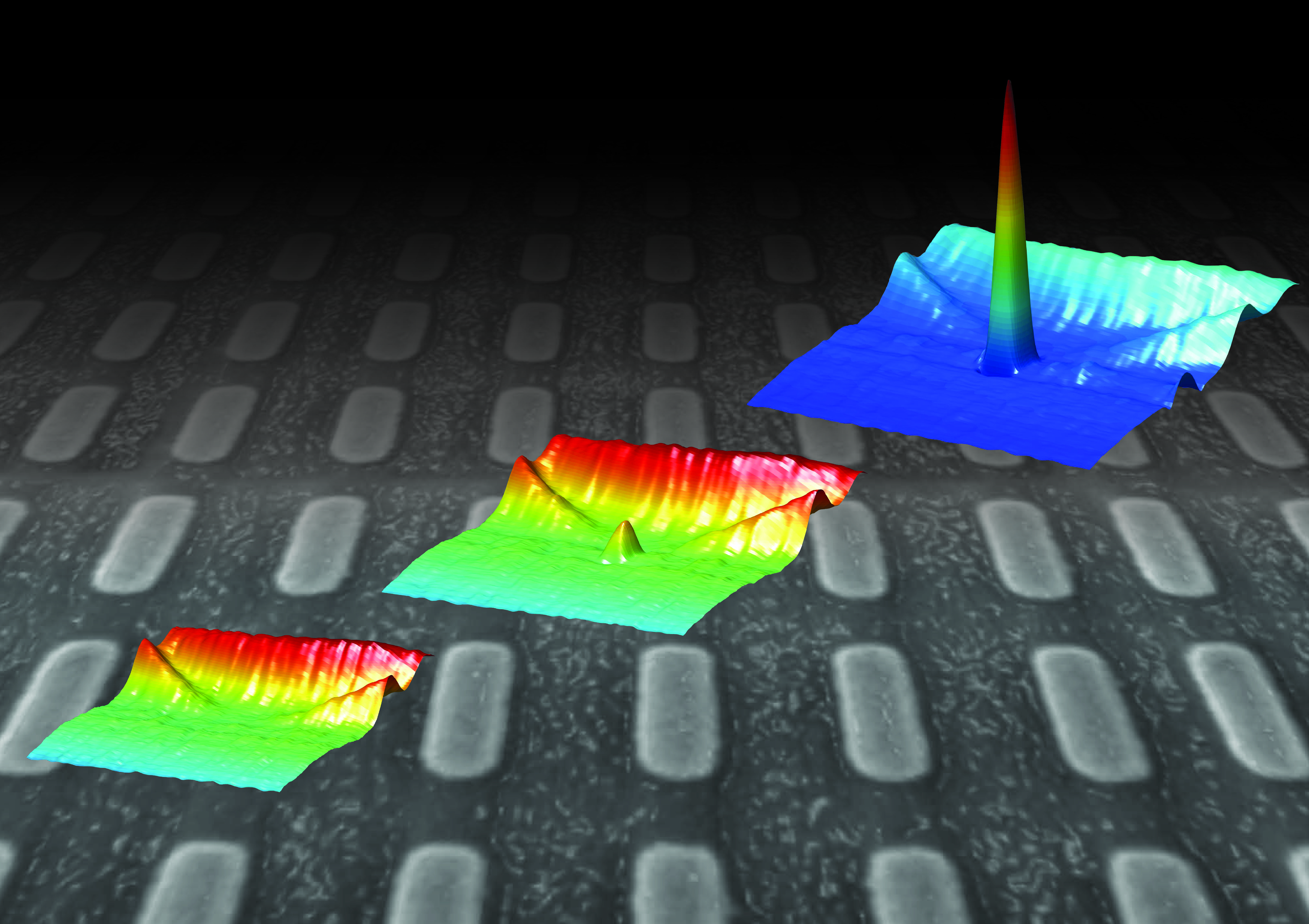By controlling the interplay between light and matter at a nanoscale, researchers from the Dutch Institute of Fundamental Energy Research, Eindhoven University of Technology and Universidad Autonoma of Madrid (Spain) have created a laser which is small and sturdy enough to fit onto a computer chip. The results have great potential for the field of photonics, the science that investigates the generation, propagation and detection of light.
The paper Plasmon-Exciton-Polariton Lasing was published in the recent edition of Optica, a high impact journal of the Optical Society of America, and will be presented at the Physics@Veldhoven national Dutch physics conference on 18 January 2017.
How lasers work
Lasers produce intense and coherent light and are in wide use in areas as diverse as industrial processes, food quality monitoring, sensors for detecting gases and bio-molecules, data communication via optical fibers and even precise time measurement. A conventional laser (Light Amplification by Stimulated Emission of Radiation) is based on a medium which amplifies light by multiplying photons (light particles) inside it. This material is surrounded by mirrors to form an optical cavity to recycle these photons. Once more energy is put into the medium than its lasing threshold, the system starts to emit intense and coherent laser light.

of the exciton polariton laser. The background image
shows the nanoparticle array and a layer of organic
molecules. The laser behaviour is visible from its
intense emission peak. Credit: Optica / M. Ramezani et al.
The research: harnessing electrical charge with nano-antennas
To shrink their laser down to the nanoscale, physicist Mohammad Ramezani and colleagues used a thin layer of an organic material as their optical medium. In this layer, they produced packets of electrical charge (excitons) which will eventually collapse and send out photons (particles of light) in random directions. The team replaced the mirrors in a conventional laser by an ordered array of nanometer-sized metal nanoparticles that work as miniscule antennas. Like radio-antennas, these nano-antennas make sure that the laser light is sent out in well defined preferential directions.
Exciton condensation on a chip
The results of Ramezani and his colleagues are exciting because they achieve laser emission in an unconventional way. Instead of amplification of photons in the organic layer, they achieve laser emission by first condensing all the excitons into the same state and then letting they collapse to emit light. This process, known as Bose Einstein Condensation (BEC) usually requires very low temperatures. The laser emission in Ramezani’s systems takes place at the nanoscale and at room temperature. This opens up new opportunities for applications as a laser on a chip in computers that manipulate data in the form of light rather than as slower-moving electrical current.
Go to the News page.